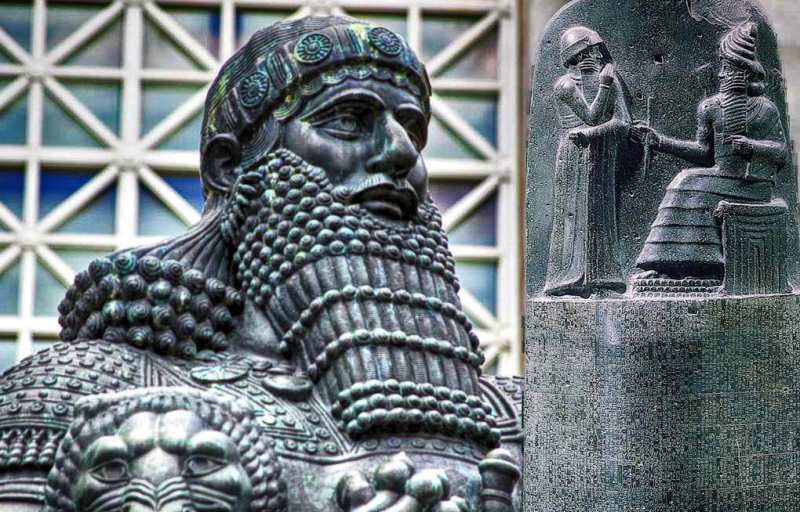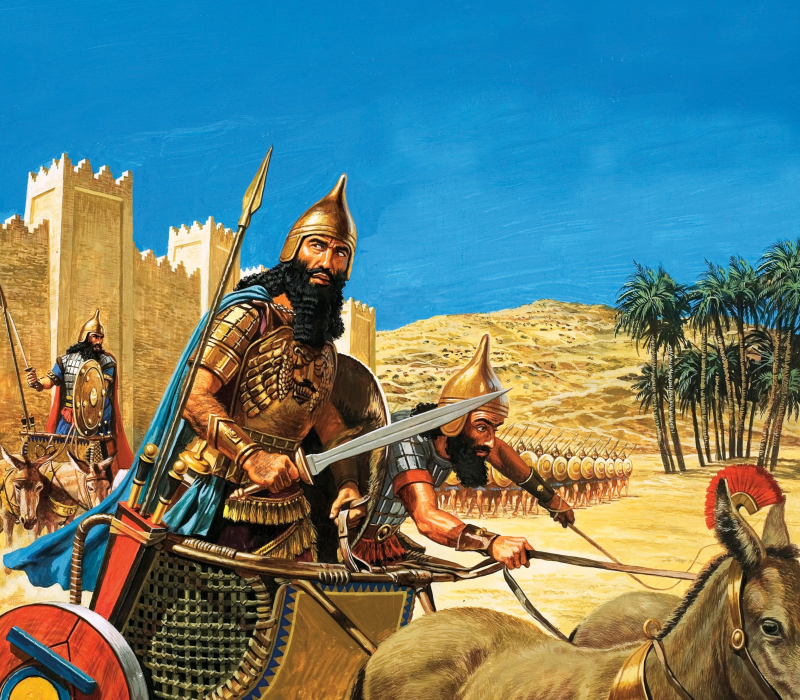King Hammurabi
King Hammurabi of the Babylonian city-state conquered much of northern and western Mesopotamia and by 1776 BC he was the most influential leader in Mesopotamian history, describing himself as "a king who submits four-quarters of the Earth". The documents show that King Hammurabi was a classical micromanager, concerned with all aspects of his rule, and this is reflected in his famous legal code, which exists in the partial copies of this law in the Louvre and on clay tablets. This can be seen as a monument showing King Hammurabi as an exemplary king of justice. What's interesting about Hammurabi's representation of the law stele is that he is seen as the recipient of the law from the god Shamash, who sits, completely struck by lightning from his shoulder. The emphasis here is on Hammurabi's pious role and that the laws themselves come from god.
As the sixth king of the first line of Babylon, King Hammurabi was famous for the legal nature of the order. His 8-foot-tall curved steles and the earliest organized law were found at this site as examples. His Code of Administration ranks as an 'eye-opening' approach to justice written in the Babylonian vernacular. He is known as one of the earliest legislators in the history of the world. King Hammurabi is a legendary figure that cannot fail to be mentioned in the list of awesome monarchs every historian should know.
- Description: King of the Old Babylonian Empire
- Born: 1810 BCE (Babylon)
- Died: 1750 BCE (Babylon)
- Reign: 1792 - 1750 BCE (42 years)














